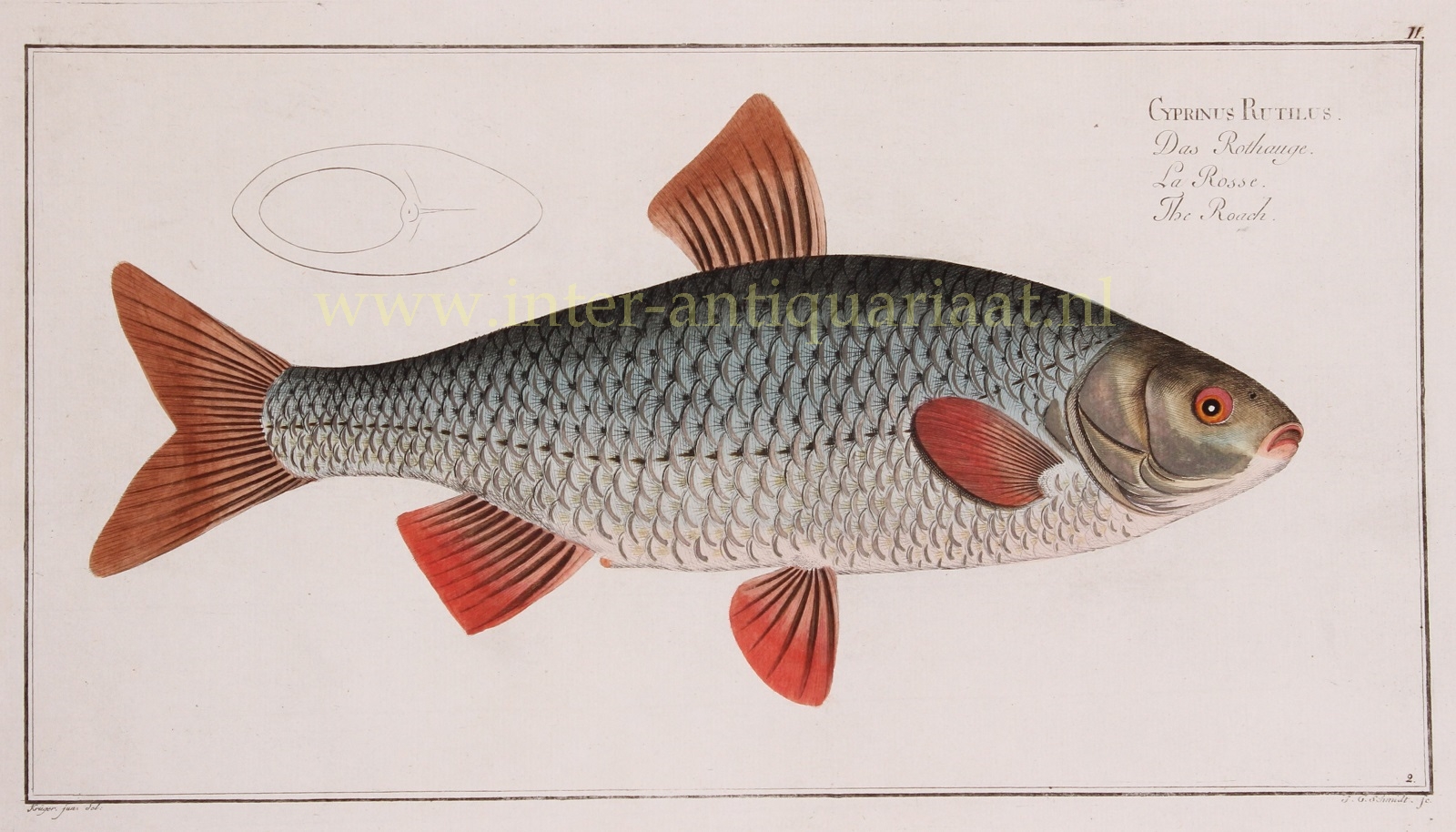Roach (fish) – Markus Elieser Bloch, 1782-1795
THE COMMON ROACH “Cyprinus rutilus / Das Rothauge / The Roach”, copper engraving made by Ludwig Schmidt after the drawing…
Read more€350
THE COMMON ROACH
“Cyprinus rutilus / Das Rothauge / The Roach”, copper engraving made by Ludwig Schmidt after the drawing of Krüger jr, for Markus Elieser Bloch’s “Allgemeine Naturgeschichte der Fische” published in Berlin between 1782 and 1795. With original hand colouring. Size: 19 x 38 cm.
The roach is a small fish, often reaching no more than about 35 centimetres. Its body has a bluish-silvery colour and becomes white at the belly. The fins are red. The number of scales along the lateral line is 39–48. The dorsal and anal fins have 12–14 rays. Young specimens have a slender build; older specimens acquire a higher and broader body shape. The roach can often be recognized by the big red spot in the iris above and beside the pupil. Colours of the eye and fins can be very pale, however, in some environments.
The common roach can most easily be confused with the common rudd, the dace (Leuciscus leuciscus), or the ide (Leuciscus idus). They can be distinguished by these characteristics:
The common rudd has a more yellow/greenish or golden colour. The backfin is placed more backwards and between the tip of the ventral scales and the first ray of the anal fin are only one or two scales. The roach has four or five scales there. The mouth of the rudd is more upturned and the head appears sharper.
Bloch’s labour on the “Allgemeine Naturgeschichte der Fische” occupied a considerable portion of his life, and is considered to have laid the foundations of the science of ichthyology. The publication was encouraged by a large subscription, and it passed rapidly through five editions in German and in French. Bloch made little or no alteration in the systematic arrangement of Peter Artedi and Carl Linnaeus, although he was disposed to introduce into the classification some modifications depending on the structure of the gills. To the number of genera before established, he found it necessary to add nineteen new ones, and he described 276 species new to science, many of them inhabitants of the remotest parts of the ocean, and by the brilliancy of their colours, or the singularity of their forms, as much objects of popular admiration as of scientific curiosity.
Bloch is considered the most important ichthyologist of the 18th century.
Price: Euro 350,-

